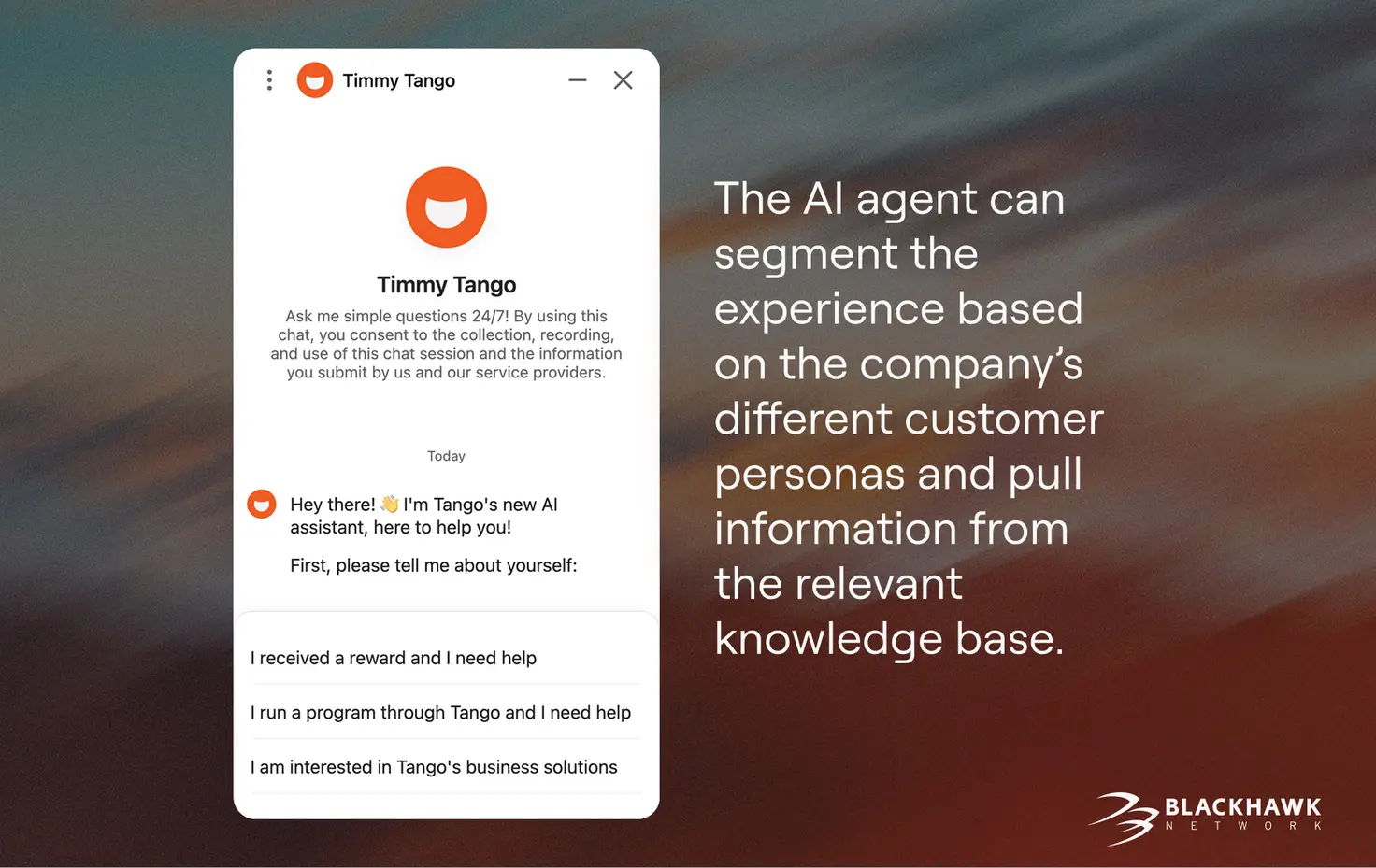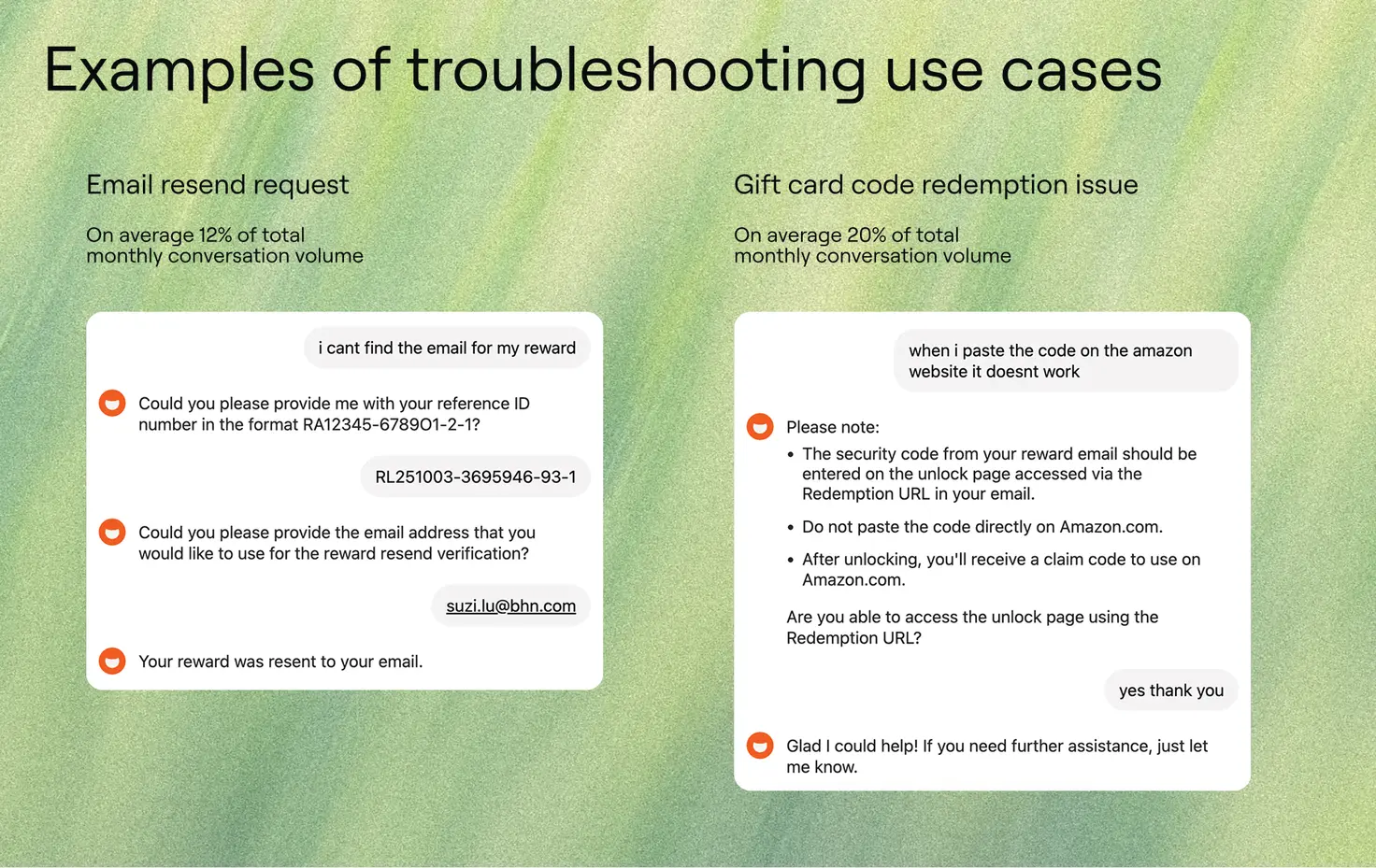
how to prioritize tech stack investments for AI customer service
Learn how to invest in systems that boost AI performance, CSAT, and ROI, without bloating your customer service tech stack.
Learn More

Everyone wants to talk about AI agents. Few are ready to do what it takes to make them actually work.
At Ada , we’ve written before about the difference between reactive bots and truly agentic AI : systems that don’t just respond, but resolve. Automation that doesn't just follow instructions, but can learn, reason, and act with autonomy. The kind of AI that doesn’t wait for permission to fix the problem, it just fixes it.
But turning AI into a high-performing team member doesn’t start with technology—it starts with the operating model. Agentic AI only thrives when supported by a customer service model built for it: one grounded in clear roles, performance metrics, and continuous improvement.
That’s why we’re pulling back the curtain on one of the most sophisticated AI-first customer service transformations we’ve seen to date: Blackhawk Network (BHN) .
Over the past year, BHN didn’t just deploy an AI agent—they restructured their operations to help it perform. Their AI agent, Timmy Tango, now takes the front lines, resolving issues at scale and improving continuously alongside the human team. By establishing the right roles, workflows, and systems, they’ve embedded AI into the core of their customer service.

The result? A leaner, smarter, more strategic team that’s setting the bar for what it really means to operationalize agentic AI.
So what does it actually take to bring agentic AI to life inside a complex customer service organization? BHN’s transformation offers a glimpse at what’s possible when AI is treated not as a tool, but as a teammate.
Before BHN acquired Tango Card, the team followed a familiar model: agents fielded high volumes of emails and calls, supervisors handled people management and escalations, and knowledge lived mostly in people’s heads.
It worked for a time, but it wasn’t scalable. There was no bandwidth for strategic planning, no space for proactive improvements, and no infrastructure to support automation, let alone autonomy.
Early automation helped relieve pressure by handling routine inquiries. That breathing room opened the door to bigger changes. When generative capabilities were introduced, the shift accelerated. Agents were no longer expected to know everything. Instead, they were expected to become domain experts, and use that expertise to guide and coach the AI.

BHN began assigning agents to specific product areas and training them to review, critique, and improve AI conversations. To support this evolution, BHN also introduced new roles and specializations:
What BHN proved is this: agentic AI doesn’t replace the team, it elevates them . It frees people from repetitive tickets and invites them into higher-order work like training, coaching, and strategy.
Don’t let an outdated team structure hold you back. Download the guide today and start building a customer service team that uses both AI and human agents to their fullest potential.
Get the guide
Autonomy doesn’t mean absence. Just like your top-performing employee, agentic AI only performs when it’s supported by the right systems: structured knowledge, clear feedback loops, and ownership across technical and operational teams.
To support that structure, BHN used a maturity model to guide their transformation, mapping out what it takes to operationalize AI. That framework helped define clear roles and workflows across operations, content, and systems.
They even invested in formal upskilling, rolling out training in analytics, agile methodologies, and systems thinking to turn frontline staff into AI collaborators.
This wasn’t just a customer service team learning to use a new tool. It was an operational shift—one that gave agentic AI the foundation to deliver real business outcomes.
We’ve partnered with hundreds of customer service leaders to define the 5 essential dimensions of a thriving ACX program. Don’t wait for your competition to catch up—take the first step toward mastering AI customer service.
Get the guide
Structure alone isn’t enough. To unlock real impact, BHN gave their AI agent the ownership, access, and oversight it needed to act with confidence.

This looked like:
This is what distinguishes agentic AI from traditional automation. It doesn’t just answer or follow instructions, it learns, adapts, and acts—effectively taking ownership of customer service interactions.
At BHN, that ownership is what makes the AI agent a true part of the team.
“At BHN, we’re deeply committed to delivering exceptional customer experiences—it’s at the heart of everything we do. The emergence of agentic AI is not just enhancing how we think about customer engagement and support; it’s completely transforming it.”


These aren’t theoretical takeaways. They’re backed by BHN’s real results after a year of operational maturity and scaling across brands, channels, and use cases. Here’s what their story shows us about doing agentic AI right:

This wasn’t a textbook implementation. It was an intentional reinvention of what customer service can be when AI isn’t just layered on, but fully embedded into how the team operates, collaborates, and delivers impact.
BHN didn’t just adopt new technology—they built the structure, systems, and roles to make it perform. With AI now integrated across channels and business lines, they’ve created a model for what the modern support team looks like: leaner, smarter, and strategically aligned.
And BHN’s team is just getting started. As they scale Ada across more brands, channels, and use cases, they’re not just meeting expectations. They’re setting them.
From upskilling agents into AI collaborators to deploying automation across brands and channels, Blackhawk Network is proving what’s possible when customer service becomes a strategic engine for growth.
Learn more